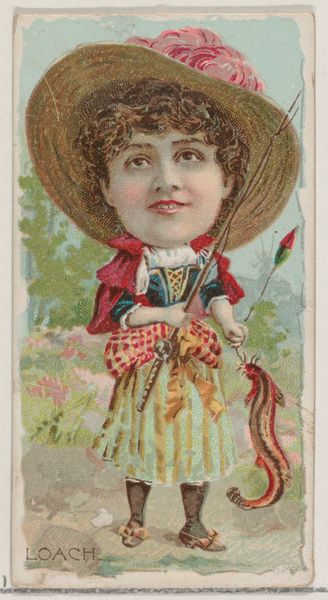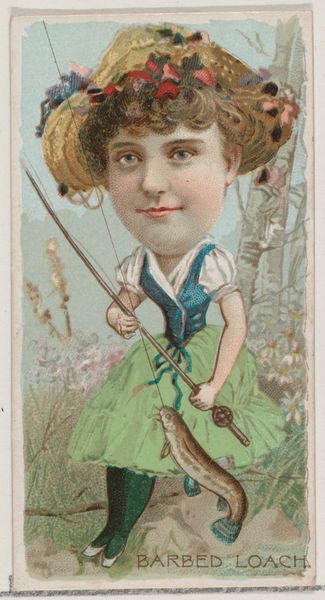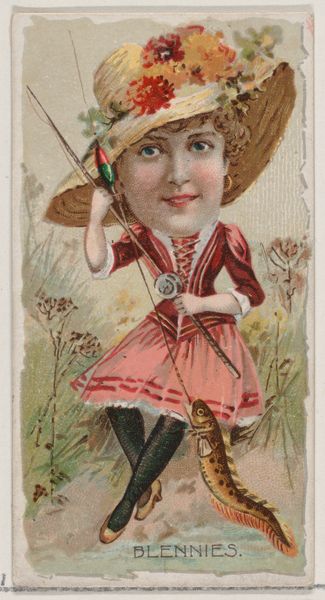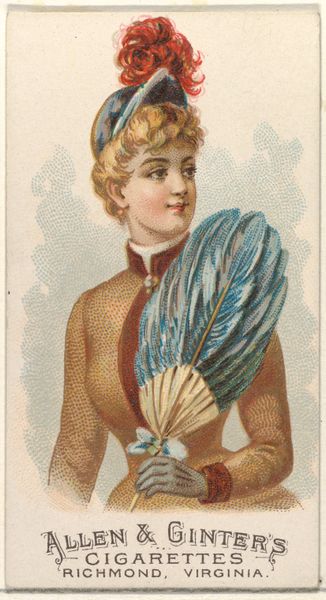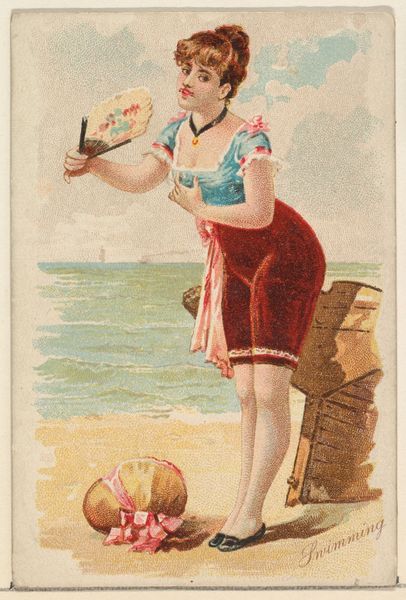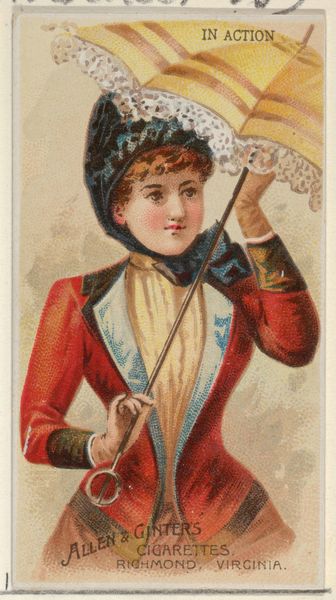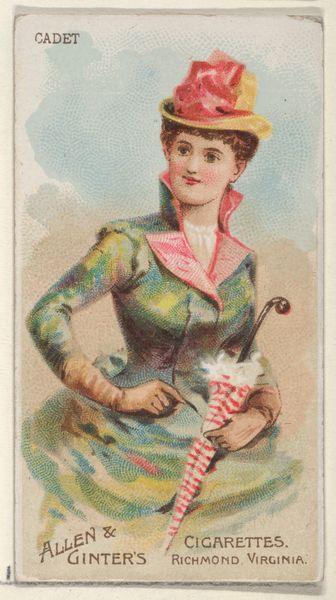
Seahorse, from the series Fishers and Fish (N74) for Duke brand cigarettes 1888
0:00
0:00
Dimensions: Sheet: 2 3/4 × 1 7/16 in. (7 × 3.6 cm)
Copyright: Public Domain
Editor: Here we have “Seahorse, from the series Fishers and Fish,” created around 1888 by Knapp & Company. It's a lithograph, a commercial print made for Duke brand cigarettes. I’m immediately struck by its whimsical style— the exaggerated features, like a caricature, yet so carefully produced! What stands out to you? Curator: What grabs me is less the individual style and more the means of its production. It's lithography, a relatively inexpensive printing method which democratized image-making at the time. Think about it: mass production for a consumer product, like cigarettes. How does this commercial application, aimed at the masses, change the way we should assess its aesthetic merit and meaning, compared to something perceived as fine art? Editor: So you're saying we should focus on the socioeconomic impact rather than just the image itself? Curator: Exactly. Consider the labour involved in its creation and distribution, from the artist's initial design to the factory workers churning these out. The Ukiyo-e influence evident in the image is deliberately used here to associate with similar aesthetics already in wide circulation and mass consumption at the time, even in other parts of the world! To understand it, we have to go beyond formal elements. Do you think it elevates craft into the realm of art, or diminishes art to the level of product? Editor: That's a really interesting question. It blurs the lines, doesn't it? Maybe both? Seeing it this way makes me consider the entire system that put this image into people’s hands. Curator: Indeed. And it challenges us to expand our notion of art beyond individual genius to collective production. Thinking about it as a material object that exists within a specific economic landscape changes its nature completely. Editor: I hadn't considered how much the process behind its creation and consumption informs the artwork itself. It definitely gives me a broader perspective!
Comments
No comments
Be the first to comment and join the conversation on the ultimate creative platform.

